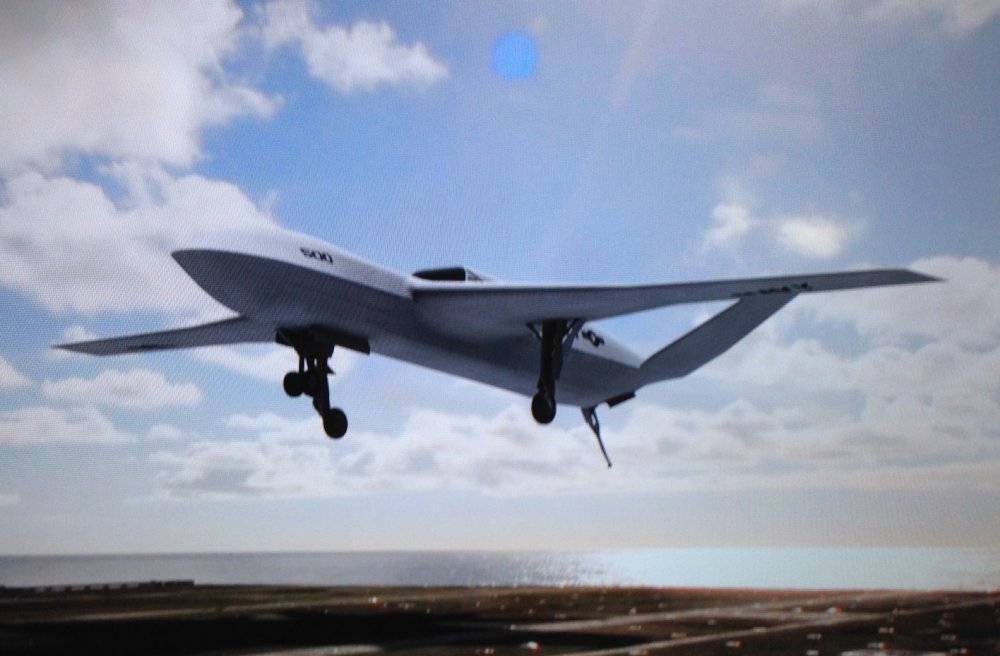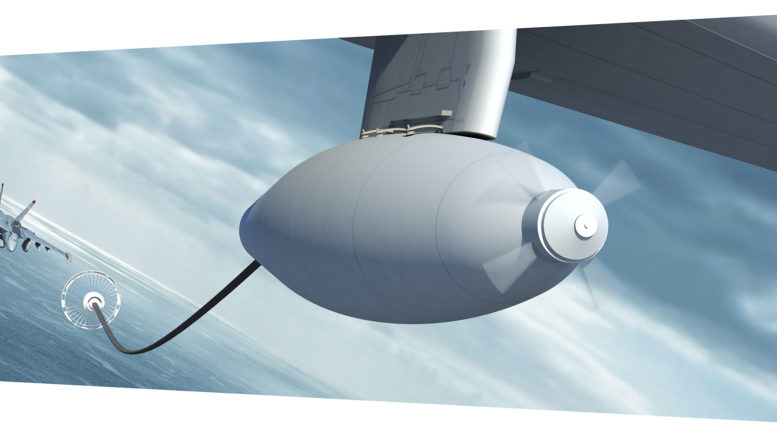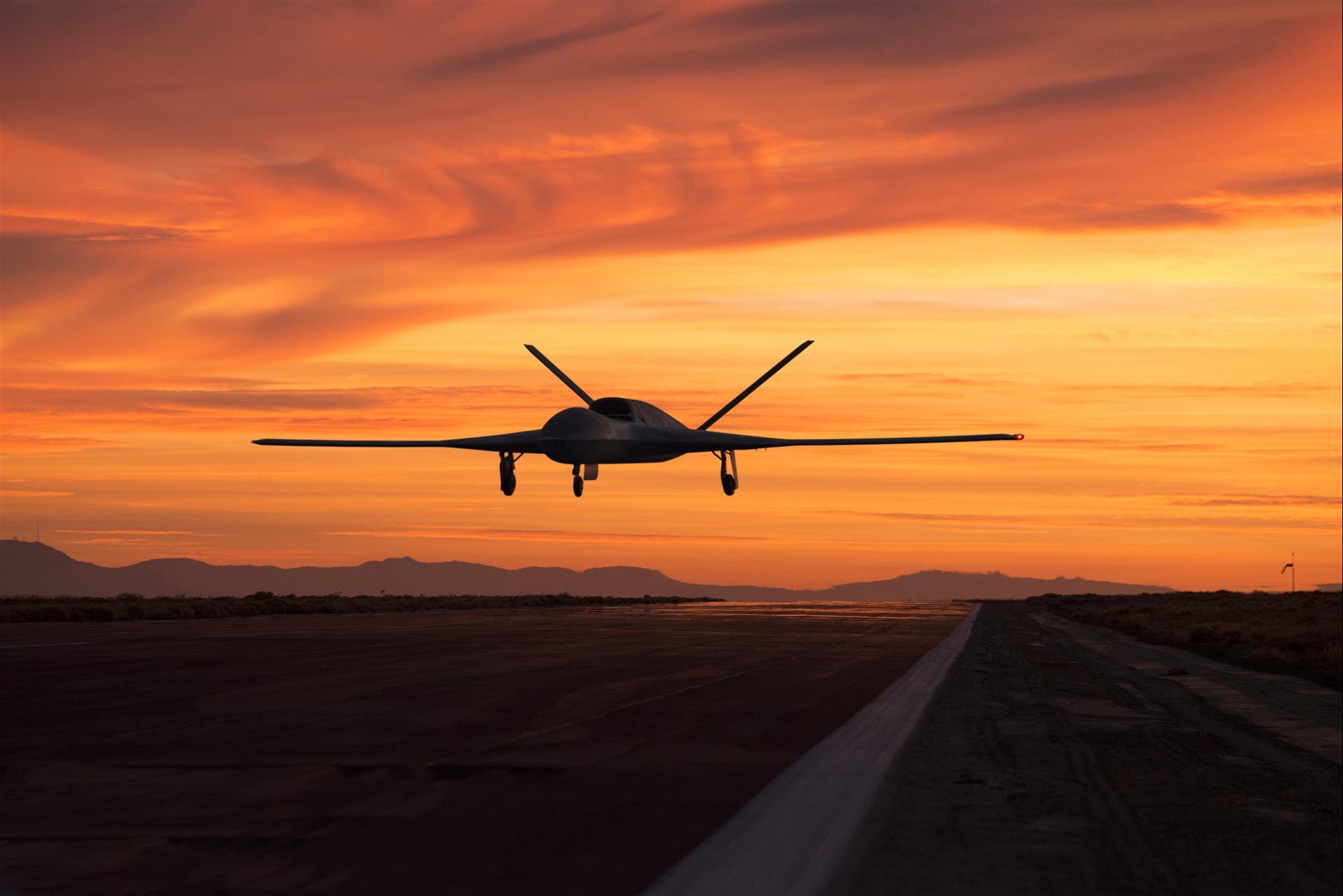The US Navy, in its latest draft request for proposals issued last month, pitched four major defense firms to submit concepts for a future unmanned aerial refuelling tanker that top officials say could be flying with the first aircraft carrier wing as early as 2019 or 2020.
General Atomics Aeronautical Systems Inc. will go up against three defense giants – Northrop Grumman, Lockheed Martin and Boeing – vying for an engineering and manufacturing development contract that will be awarded next year for the MQ-25A Stingray, the Navy’s first carrier-based unmanned air vehicle.
Top General Atomics officers expressed confidence that the privately owned company is poised well for the competition.
“We’ve been following this thing for seven years. I think we’ve got it down and we’ve got the right airplane,” David R. Alexander, president of GA-ASI’s Aircraft Systems, said Wednesday. “So we feel pretty confident.”
“Our design is optimized,” Alexander said during a roundtable with journalists, including USNI News, at the company’s headquarters in Poway, Calif. “We are pretty happy with what we have.”
Linden P. Blue, General Atomics’ chief executive officer, didn’t comment when asked about the Stingray program and draft RFP.
Company officials were cautious in their words, declining to comment more specifically about the program or proposed concept, citing constraints because of the pending RFP. “We think the Navy is really on the right track in terms of where the requirements currently are,” said Robert Walker III, the company’s senior director for strategic development.
So what will General Atomics’ contender look like?
While Boeing and Lockheed Martin have released partial images of its Stingray concept, both with fuelling probes attached to external tanks, General Atomics has not released any imagery or artist’s rendition of its current concept for the MQ-25A Stingray. “This is going to be an extremely competitive procurement,” said one official.
Among the company’s portfolio of unmanned aerial systems is the Predator C Avenger. In 2010, General Atomics introduced its Sea Avenger variant, with folding wings, as a potential contender for the Navy’s proposed unmanned carrier-launched airborne surveillance and strike system. At the time, UCLASS was envisioned as providing the capability for unmanned airborne intelligence, surveillance and reconnaissance missions, rather than just serving as an aerial tanker to refuel carrier air wing aircraft.
Avenger, a jet UAV with a large internal weapons bay, modular design and six external hardpoints, already is envisioned for a range of wartime and non-combat missions. Could it still fit that in-flight tanking role, accommodating fuel storage and delivery as well as landing gear as outlined in the RFP?
The final RFP is expected to be issued sometime this fall, officials told USNI News.
In its draft RFP, the Navy set out two primary key performance parameters, MQ-25A program manager Capt. Beau Duarte told USNI News in July. It must be a sea-based tanker and it must be able to catapult off and recover aboard an aircraft carrier and integrate with the carrier’s systems, including its shipboard jet fuel and refuelling systems.
“It needs to be able to deliver a robust fuel offload at range to support an extension of the air wing and add flexibility of what’s available from a mission tanking perspective,” Duarte said.
The Stingray would pick up the aerial refuelling mission currently done by F/A-18 E/F Super Hornet multi-mission jets, so it would ease the burden on those aircrews. About 20 to 30 percent of the strike fighter flight hours are spent on tanking missions, according to Navy estimates, so adding an unmanned tanker would relieve those air crews of that role and let them conduct other missions.
“The intent of this system is to extend the striking capability of the carrier air wing through organic tanking capability,” Rear Adm. Mark Darrah, Program Executive Officer Unmanned Aviation and Strike Weapons, said last month. “We want to make better use of our combat strike fighters and extend the range of the carrier air wing, and that’s what this system is intended to do.”
The Navy plans to field and operate the MQ-25A Stingray first with USS Dwight D. Eisenhower (CVN-69) and USS George H.W. Bush (CVN-77), both which would require upgrades including control stations and data links needed to support the system, officials said in June. In 2013, Bush had hosted several arrested landings and cat shots of Northrop Grumman’s X-47B, a bat-wing-designed demonstrator UAV.
Top Image: An early artist’s concept of the General Atomics Sea Avenger taken from a display monitor. The design shows a wing-body-tail configuration US Naval Institute Photo
Source: USNI News



